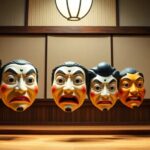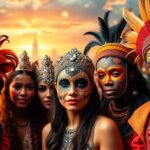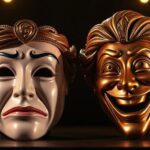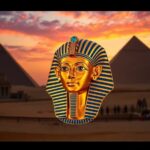The Fascinating History of Halloween Masks
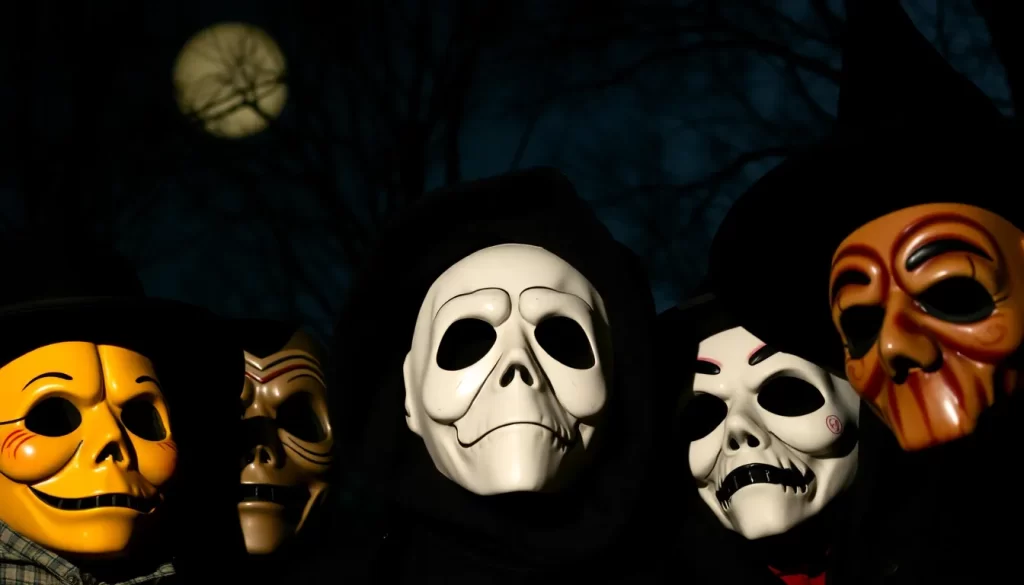
Long before Halloween became the candy-filled celebration we know today, ancient peoples wore masks to frighten spirits and honor the dead. The tradition dates back over 2,000 years to Celtic festivals like Samhain, where villagers believed disguises could protect them from wandering souls. From eerie hand-carved visages to today’s screen-accurate horror icons, the history of Halloween masks is a fascinating blend of superstition, creativity, and cultural change.
Tracing this evolution reveals how Halloween masks have mirrored societal shifts—rooted in ancient rituals, shaped by immigration and religion, and later influenced by pop culture, globalization, and modern technology. The journey spans from Celtic bonfires to high-tech LED creations, highlighting how each era left its mark on the masks we wear every October 31st.
The Origins of Halloween and Its Ancient Roots
Long before Halloween became a modern celebration filled with costumes and candy, it had deep roots in ancient pagan traditions. One of the most influential of these traditions was Samhain, a Celtic festival that marked the end of the harvest season and the beginning of winter. Central to these early practices were rituals involving masks and disguises, which played a significant role in connecting the living with the spirit world and in protecting individuals from supernatural threats.
Samhain: The Celtic Festival That Inspired Halloween
The history of Halloween masks begins with Samhain (pronounced sow-in), an ancient Celtic festival celebrated around October 31st. For the Celts, this date marked the end of the light half of the year and the start of the dark, cold months ahead. It was believed that during Samhain, the veil between the living and the dead was at its thinnest, allowing spirits, both good and evil, to cross into the world of the living.
To honor deceased ancestors and protect themselves from malevolent forces, Celtic communities held bonfires, feasts, and sacred rituals. During these ceremonies, people would often wear animal skins and handmade masks as a form of ritual disguise, not merely for celebration, but for survival and spiritual defense.
These early masks were likely primitive and symbolic, representing spirits, animals, or supernatural beings. The goal was twofold: to blend in with wandering spirits or to scare them away.
Spirits, Disguises, and Early Ritual Masks
In the worldview of the Celts, the spirit world was a powerful and ever-present force. During Samhain, when spirits were believed to roam freely, disguises became a vital form of protection and participation in the festival’s spiritual dimension. The act of masking served as a way to deceive or appease supernatural beings.
Early Halloween masks were not ornamental; they were deeply symbolic and functional. Worn during ritual dances and nighttime processions, these masks allowed participants to:
- Communicate with ancestral spirits
- Ward off harmful entities
- Embody mythical or divine figures
The concept of "guising", where individuals disguised themselves and moved from house to house performing small tricks or reciting verses in exchange for food, also has its origins here. This practice evolved over centuries into modern trick-or-treating, with masks playing a central role in both anonymity and tradition.
Role of Masks in Warding Off Evil
The idea that a mask could hide one’s identity or scare away evil was not exclusive to the Celts—it appears in cultures across the globe. However, during Samhain, masks had a unique function: they were used to confuse or repel spirits who might want to cause harm.
By masking their human features, people hoped to:
- Avoid being recognized by vengeful spirits
- Prevent possession or mischief from fairies and ghosts
- Symbolically embody otherworldly power to deter evil
These traditions highlight the protective role of Halloween masks, long before they became a costume accessory. Over time, as these rituals merged with Christian observances like All Saints’ Day and All Souls’ Day, the spiritual meanings behind the masks persisted in subtle ways.
Today, while Halloween masks are often chosen for style or fun, their historical roots lie in deep, ancient fears and beliefs—a fascinating blend of spirituality, survival, and symbolism that still lingers in our modern celebrations.
Halloween Masks in the Middle Ages
As Christianity spread throughout Europe, many pagan customs—including the Celtic festival of Samhain—were gradually absorbed and reinterpreted through a Christian lens. This fusion gave rise to new holidays like All Saints’ Day and All Souls’ Day, which retained some of the original themes of honoring the dead. During the Middle Ages, masks continued to be a prominent element, used in religious observances, folk rituals, and communal festivities. Their meanings, however, began to shift and evolve alongside the changing spiritual and social landscape.
Influence of Christian Traditions (All Saints’ Day & All Souls’ Day)
By the 8th century, the Catholic Church established All Saints’ Day (November 1st) and All Souls’ Day (November 2nd) as official holidays to honor saints and pray for departed souls. These Christian observances were intentionally placed near Samhain to ease the transition from pagan to Christian traditions.
Despite this shift, many local communities continued to practice older customs, including:
- Dressing in costumes to represent saints, angels, or souls in purgatory
- Donning masks as part of pageantry or religious drama
- Reenacting the struggle between good and evil
During this time, Halloween masks often took on a moral or spiritual significance. Masks of demons or grotesque faces were worn to symbolize sin, temptation, or the torments of hell, sometimes used in parish plays or religious processions. These visual representations served as both educational tools and theatrical entertainment, reinforcing Christian teachings.
Masquerade Elements and Folk Customs
Outside of church rituals, folk traditions flourished in rural areas, especially during the late Middle Ages. These included masquerades, mumming plays, and seasonal festivals where people disguised themselves for various reasons—many of which echoed older, pre-Christian beliefs.
Key customs involving masks included:
- Mumming and souling: Groups of masked performers went door to door offering songs or prayers for the dead in exchange for food (the forerunner to trick-or-treating).
- Disguises during autumn feasts: People wore masks to playfully blur social lines, allowing peasants to impersonate nobles, or the living to mimic the dead.
- Carnivalesque inversions: In some traditions, masks allowed for a temporary reversal of roles, encouraging humor, satire, and harmless mischief.
These practices weren’t always sanctioned by the Church, but they became deeply embedded in local culture, especially in places like England, Ireland, and parts of Central Europe. Over time, they helped lay the foundation for the more playful and secular side of Halloween we recognize today.
Evolution of Symbolism in Masks
Throughout the Middle Ages, the symbolism of Halloween masks expanded significantly. While early masks were rooted in spiritual protection or ritual purpose, medieval masks began to reflect a broader range of meanings:
- Moral allegory: Masks became metaphors for virtue and vice, good and evil, salvation and damnation.
- Social satire: Hidden behind a mask, individuals could mock authority, criticize the elite, or engage in harmless rebellion.
- Superstition and fear: Masks depicting death, monsters, or demons were believed to frighten away evil spirits or ward off disease and misfortune.
In many ways, the medieval period marked a transition from sacred to symbolic in the use of Halloween masks. They remained powerful tools for storytelling and spiritual reflection, while also becoming a medium for creativity, community expression, and seasonal celebration.
Halloween Masks in America: Immigration and Popularization
The modern celebration of Halloween in the United States owes much of its origin to immigrant communities who brought with them ancient customs, storytelling traditions, and seasonal rituals. As these traditions mingled with American culture, Halloween evolved from a modest, regional celebration into a nationally recognized holiday. A major part of this evolution was the popularization of costumes and masks, which transformed over time from homemade disguises to mass-produced items available in every store by October.
How Irish and Scottish Traditions Shaped U.S. Halloween
During the 19th century, waves of Irish and Scottish immigrants arrived in the United States, many fleeing famine and seeking a better life. Along with their language and customs, they brought their autumn festivals—Samhain, All Hallows’ Eve, and Guising traditions—which emphasized storytelling, disguises, and honoring the dead.
Key contributions to American Halloween culture included:
- “Guising” and “souling”, where children dressed in masks and went door to door for food or coins
- Tales of spirits, banshees, and faeries, which fueled the use of spooky or mystical masks
- The blending of Christian and pagan rituals, reinforcing the tradition of disguising oneself to interact safely with the spirit world
These traditions quickly took root in American communities, especially in cities with large Irish populations such as New York and Boston. As Halloween spread, it became a community-based holiday, and masks were central to the festivities, offering anonymity, mystery, and fun.
Commercialization in the 20th Century
By the early 1900s, Halloween had transitioned from a community and immigrant tradition into a national commercial phenomenon. This was driven in part by:
- The rise of department stores and catalogs offering ready-made costumes
- The popularity of Halloween parties in schools and neighborhoods
- The growth of American pop culture, including comic books, radio shows, and later, television
During the 1920s to 1950s, mask production became a booming industry. Companies like Dennison Manufacturing Co. and Beistle Company produced colorful, mass-market Halloween decorations and paper masks. These items were affordable and accessible, appealing especially to the growing middle class.
In the mid-20th century, the commercialization of Halloween introduced:
- Licensed character masks (e.g., witches, skeletons, and cartoon characters)
- The concept of costume sets for children, with a plastic mask and matching outfit
- A strong shift from handmade to factory-produced masks, ensuring consistency and safety
This era laid the foundation for modern Halloween marketing, where masks are not only fun accessories but also highly collectible items tied to nostalgia and pop culture.
Early Mask Materials and Designs (Paper, Fabric, Latex)
The evolution of mask materials in the U.S. tells a parallel story of technological innovation and cultural trends. Early masks in America were often simple and homemade, crafted from whatever was available—cloth, painted burlap, or carved vegetables.
As demand grew, manufacturers began to experiment with different materials:
- Paper mâché: Used extensively in the early 1900s for lightweight and colorful designs
- Pressed cardstock and crepe paper: Cheap, mass-producible materials that became Halloween staples
- Felt and fabric: Popular for comfort and flexibility in handmade or school-made masks
- Plastic (vacuum-formed): Became the dominant material by the 1950s, offering safety, durability, and colorful finishes
- Latex and rubber: Introduced for more realistic and expressive masks, especially in the 1970s and 1980s, allowing for horror-themed detail and lifelike features
These innovations changed how Americans experienced Halloween. Masks became a key part of costume identity, enabling wearers to transform into everything from classic monsters to contemporary superheroes.
Pop Culture’s Impact on Halloween Masks
As Halloween evolved into a mainstream celebration, popular culture began to play a dominant role in shaping how people dress up, especially when it comes to masks. From classic horror villains to beloved animated characters, pop culture has transformed Halloween masks into symbols of fandom, nostalgia, and creativity. The influence of films, television, comic books, and online trends has redefined not only what masks people wear, but also how they engage with the holiday.
The Rise of Horror Films and Iconic Characters
Starting in the mid-20th century, horror films became a major cultural force, and with them came a new era of instantly recognizable Halloween masks. Characters like Frankenstein’s monster, Dracula, and the Wolfman had already been popular, but the true explosion came with the slasher films of the 1970s and 1980s.
Key moments in horror's impact on Halloween masks:
- Michael Myers’ white mask from Halloween (1978) became a chilling icon
- Jason Voorhees’ hockey mask from Friday the 13th became a staple of horror-themed costumes
- Ghostface from Scream and later characters like Jigsaw or Pennywise brought psychological horror into homes
These masks are popular not only because they are scary, but because they are instantly recognizable and emotionally evocative. They let wearers tap into a shared cultural fear or fascination, and have helped maintain horror as a core element of Halloween expression.
Superheroes, Cartoons, and Mass Production
Beyond horror, the popularity of superheroes, animated series, and sci-fi franchises has expanded Halloween mask trends in more colorful and playful directions. Children and adults alike seek to embody their favorite characters from:
- Marvel and DC Comics (e.g., Spider-Man, Batman, Iron Man)
- Animated classics (e.g., Mickey Mouse, Scooby-Doo, Pokémon)
- Fantasy and sci-fi sagas (e.g., Star Wars, Harry Potter, Avatar)
The rise of global entertainment franchises led to:
- Mass production of licensed character masks, often bundled with costumes
- A wide range of styles and materials, from cheap plastic to deluxe latex and foam
- Seasonal marketing campaigns tied to blockbuster movie releases
This era marked the normalization of brand-centric costumes, where Halloween became an opportunity to showcase fandoms and celebrate popular icons, especially among children.
Influence of TV, Comics, and Internet Memes
In the digital age, Halloween masks are no longer driven solely by movies or comic books. Instead, television characters, viral videos, and internet memes are playing an increasing role in mask popularity. This shift reflects a broader change in how people consume media and express humor, creativity, or irony.
Notable examples include:
- TV show references, like characters from Stranger Things, The Mandalorian, or Squid Game
- Memes-turned-masks, such as “Shrek,” “Among Us,” “Dogecoin doge,” or ironic celebrity masks
- Satirical and humorous masks, mocking politicians, tech moguls, or trending social media figures
This evolution shows how masks have become more than disguises—they’re cultural commentary, fan statements, or inside jokes shared online. Platforms like TikTok, YouTube, and Instagram often dictate what’s “in” for the Halloween season, turning even obscure references into bestsellers.
Cultural Significance of Halloween Masks Today
In modern times, Halloween masks are no longer just spooky disguises for trick-or-treaters—they’ve become powerful tools of self-expression, creativity, and cultural dialogue. From art and identity to politics and social trends, masks reflect the values, concerns, and imagination of society. Today’s Halloween masks blend tradition with innovation, serving as canvases for personal stories and cultural commentary in a rapidly changing world.
Artistic Expression and Identity
For many people, Halloween masks offer a unique opportunity to explore and express identity. Whether someone chooses a mythical creature, a historical figure, or a fantastical being, the mask allows them to temporarily embody another persona—often one that reveals hidden aspects of themselves.
Key points:
- Cosplay and custom masks are growing in popularity, especially among young adults and artists
- Many masks are handcrafted, painted, or digitally designed, showcasing creativity and craftsmanship
- Gender expression, role reversal, or cultural exploration often influence mask choices and costume design
In this context, Halloween becomes more than a celebration—it becomes a stage for personal storytelling and symbolic transformation.
Social Commentary and Political Masks
Another major trend in contemporary Halloween culture is the use of masks for satire, protest, and social critique. From political leaders to pop culture controversies, masks often serve as a visual statement about what matters to people.
Examples of this include:
- Masks of political figures (e.g., presidents, monarchs, global leaders) used for humor or protest
- Masks mocking social movements, media scandals, or corporate culture
- The iconic Guy Fawkes mask, adopted by groups like Anonymous and protestors worldwide
These masks are not always worn for laughs—they often represent frustration, awareness, or rebellion, blending Halloween’s playful nature with deeper socio-political engagement.
The Balance Between Tradition and Innovation
While pop culture and politics influence many modern masks, there is still a strong respect for the traditional roots of Halloween. Classic masks like witches, ghosts, and skeletons remain popular, especially among those who appreciate the holiday’s connection to folklore, spirituality, and seasonal change.
At the same time, innovation continues to redefine the genre:
- Augmented reality and digital masks on apps like Snapchat and TikTok introduce virtual costume trends
- LED and animatronic masks offer high-tech experiences at parties and haunted houses
- Independent artists are creating limited-edition collector masks, blending horror, fantasy, and fine art
This delicate balance between honoring the past and embracing the future shows that Halloween masks are deeply embedded in cultural evolution. They reflect both where we’ve been—and where we’re going.
How Halloween Masks Have Evolved Over the Decades
Halloween masks have undergone remarkable transformations throughout the 20th and 21st centuries. Each era has brought distinct shifts in materials, cultural influences, and manufacturing techniques, reflecting broader changes in technology, media, and social identity. From simple homemade creations to high-tech designs, the evolution of Halloween masks tells a story of both tradition and innovation.
1920s–1950s: Handmade & Classic Designs
In the early 20th century, Halloween was still closely tied to folk traditions and local celebrations. During the 1920s to 1950s, masks were often handmade or produced in small batches using papier-mâché, cloth, or cardboard. These early designs focused on traditional Halloween imagery such as:
- Witches, goblins, ghosts, and black cats
- Stylized, exaggerated faces meant to be eerie or whimsical
- Often painted by hand and paired with simple homemade costumes
Because mass production had not yet reached Halloween culture, personal creativity played a significant role. Children and adults would often reuse or remake their masks year after year. These decades preserved the folkloric essence of disguise and seasonal celebration.
1960s–1990s: Plastic Revolution & Franchises
The mid-20th century introduced a manufacturing boom, which radically changed Halloween costumes. By the 1960s, companies like Ben Cooper, Collegeville, and Halco were producing affordable plastic masks paired with printed vinyl smocks.
Key features of this period:
- Masks made from vacuum-formed plastic, often thin and lightweight
- Elastic bands and colorful designs aimed at mass-market retail
- Popularity of licensed characters from television, comic books, and films—e.g., Superman, Star Wars, The Flintstones
This era marked the commercialization and branding of Halloween. As movies and TV gained dominance, masks shifted from traditional figures to pop culture icons, setting the stage for modern costume trends.
2000s–Present: High-Tech, DIY, and Custom Masks
In the 21st century, Halloween masks have diversified more than ever before. Today’s trends span from high-tech innovations to artisanal crafts and internet-driven creativity.
Major trends include:
- Silicone and latex masks with ultra-realistic textures, often used by horror enthusiasts and haunted attractions
- LED-lit and animatronic masks that move, change colors, or respond to sound
- A growing DIY culture fueled by YouTube tutorials, 3D printing, and Etsy creators
- Online influence from cosplay communities, TikTok makeup artists, and viral memes
This era reflects a shift toward personalization and performance. Whether someone wants a chilling, ultra-realistic monster face or a humorous mask inspired by a trending meme, today’s options are nearly limitless. The evolution of Halloween masks continues to blur the line between entertainment, art, and technology.
Halloween Masks Around the World
While Halloween is most commonly associated with North America, mask-wearing traditions linked to death, spirits, and disguise exist across many cultures. Exploring global parallels not only highlights the shared human fascination with transformation, but also reveals how cultural meanings and celebrations differ from place to place. From Mexico’s vibrant Día de los Muertos to Japan’s spiritual festivals, masks serve as powerful tools for both ritual and revelry.
Similar Traditions in Mexico, Italy, and Japan
Several countries have long-standing traditions that parallel Halloween’s use of masks, even if the festivals occur at different times or serve different purposes.
- Mexico – Día de los Muertos: Celebrated on November 1–2, this festival honors the dead with colorful skull masks and “calaveras”. Though less about disguise and more about remembrance, the use of ornate face paint and skeleton imagery echoes Halloween’s themes.
- Italy – Carnival of Venice: Though held in February, Venice’s famous masquerade masks stem from traditions of anonymity, mischief, and celebration. These elaborate masks have inspired Halloween costume trends, especially among adults.
- Japan – Obon Festival & Noh Masks: Obon, a Buddhist custom to honor ancestral spirits, includes ceremonial dances and lanterns. While masks are less common during Obon, traditional Noh and Kabuki masks—representing spirits, demons, or historical figures—are worn during festivals and theatrical performances, revealing deep spiritual symbolism.
These traditions show that using masks to explore identity, honor the dead, or ward off spirits is a truly global concept.
Differences in Cultural Meaning and Use
Despite visual similarities, the intent and meaning behind mask-wearing vary widely across cultures.
- In Western Halloween, masks are primarily used for entertainment, scare tactics, or humor.
- In Mexico, skull masks are symbols of joy and spiritual connection, not fear.
- In Asian traditions, masks often have ritualistic or religious connotations, representing gods, spirits, or ancestors.
- In parts of Africa and Oceania, masks are deeply connected to initiation rites, mythology, and storytelling.
Understanding these differences enhances cultural appreciation and prevents misappropriation or stereotyping during global costume exchanges.
Globalization and Costume Exchange
With the rise of global media and e-commerce, Halloween has spread beyond its Western origins and influenced mask-related customs worldwide. At the same time, international styles and symbolism are also making their way into Halloween celebrations.
Examples of this cultural exchange:
- Japanese anime masks, K-pop idols, and manga characters appearing in Halloween costumes across the U.S. and Europe
- Traditional motifs like Mexican sugar skulls and Day of the Dead makeup becoming popular Halloween aesthetics
- International online marketplaces enabling people to buy or create culturally inspired masks, often blending styles from different traditions
While globalization promotes creativity and diversity in mask design, it also raises important questions about respectful representation and cultural sensitivity. Today’s Halloween masks reflect not only local customs but also a constantly evolving global dialogue.
